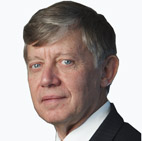When you think of the relationship between risk and return, you probably think about investments. However, there’s much more than that when it comes to the operation of a self-managed superannuation fund (SMSF).
Risk involves the trusteeship of the SMSF, compliance issues and, of course, the SMSF’s investments. By reducing risk, we usually experience less volatility in the operation of the SMSF and less angst about how things are going.
The ultimate aims are to reap greater returns financially and attain a higher quality fund, due to the greater attention being paid to its overall operation. In this article we will consider some of the risks that could be experienced by a fund trustee in relation to their investment obligations made on behalf of the members and other beneficiaries, including the member’s dependents.
Let’s look at the fund’s investments and the relationship between the risk and return associated with the requirement of the trustee law that the trustees must invest to the benefit of members.
Amounts the SMSF receives as income from investments, such as interest or dividends, reinvestment of sold or matured investments and contributions must be invested or reinvested as required by the trust deed and the covenants in section 52B of the Superannuation Industry (Supervision) Act (SIS Act). Failure to meet these requirements exposes the trustee to a range of risks and potential ‘penalties’.
The first is a challenge from beneficiaries that the trustee has not taken into account their fiduciary responsibilities as trustee. The second is that if the trustee fails to have an investment strategy or put it into place, they can be challenged under section 55 of the SIS Act, if they are liable for their lack of appropriate action.
Breaches here could result in the trustee personally being required to compensate the injured party from their own resources. In addition, the regulator or courts may impose rectification directions or financial penalties on the trustee for the breach. In the worst situations, it is possible the trustee could be disqualified as acting as a trustee of any superannuation fund – something to be avoided at all cost.
Traditionally, the usual context of the use of the words risk and return relates to the risks associated with the SMSF making any investment. From a theoretical and practical point of view, there is usually a very strong correlation between risk and return in an open market.
The trade-off between risk and return refers to the potentially higher rates of return associated with taking greater risks. The most obvious example of this is in making a bet at the races.
The likelihood of a 100 to 1 winner coming home in first place is considerably less than an even money favourite. However, if that event occurs and the outsider comes home, the returns are significantly higher.
In the investment world, it is generally considered that of the various investment classes such as cash, bonds, property and equities, it is cash where the loss of capital is usually the lowest and equities, particularly mining shares, where the likelihood of loss is the greatest.
There are many other investments where the risk and return relationships may be higher than equities or lower than cash, however, these categories are used to provide a good indication of how the relationship operates.
This chart provides some idea of the relationship between risk and return and how the potential risk increases as the trustee’s desire for greater returns increases:
Relationship between risk and return

When a trustee considers the fund’s investment strategy, they must determine an acceptable level of potential risks and level of expected returns, taking into account the investment provisions of the fund’s trust deed, the SIS legislation and the risk profile of the fund’s members.
Increasing or decreasing the exposure of the fund to particular asset classes by diversifying the investment portfolio may manage potential risk. This reduces investment risk, as it is unlikely that all asset classes will perform poorly all at once and a loss in one class will usually be cushioned by an increase in another class.
Diversification can create an environment where there is a greater likelihood of an expected return being achieved by the fund. It can be achieved in a number of ways including across asset classes or individual investments within a particular asset class. For example, cash compared to higher risk equities or long-term fixed interest investments, compared to short-term fixed interest investments.
SMSFs with low balances may have difficulties with diversification because there may be less to invest and may not have access to some investment types due to the cost of entry to the investment, for example, direct real estate investment. A fund that has or is likely to have a relatively higher asset concentration must take into account that it will be able to meet its liquidity and cash flow requirements and, as time passes, use future contributions and investment earnings to diversify and expand the fund’s investment portfolio.
Risk and return when it comes to an SMSF is much more than just investments. It has to do with the whole operation of the fund by the trustees, the investment strategy and the overall compliance of the fund with the legislation, to name just a few of the things on which trustees need to concentrate.
Important: This content has been prepared without taking account of the objectives, financial situation or needs of any particular individual. It does not constitute formal advice. Consider the appropriateness of the information in regards to your circumstances.

